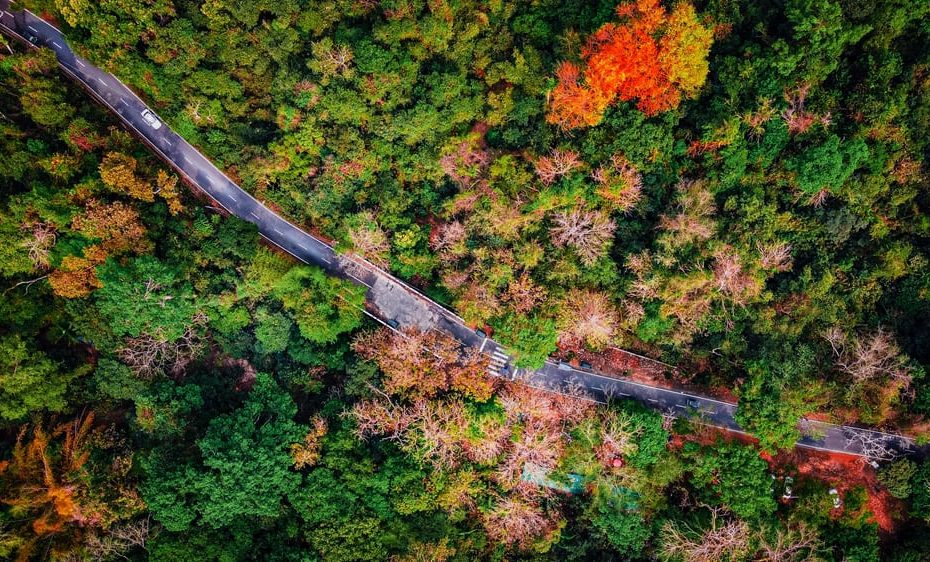Table of Contents
Introduction
Bangladesh is a land blessed with immense natural beauty and biodiversity. From the world’s longest natural beach along the Bay of Bengal to the mighty mangrove forests of the Sundarbans, Bangladesh harbors some of nature’s greatest treasures. The country’s landscapes range from sandy beaches to verdant forests, mighty rivers, rolling tea estates, and forest-covered hills. Let’s explore some of the natural wonders that make Bangladesh such an ecologically diverse and vibrant country.
Beautiful Beaches
Cox’s Bazar – Longest Natural Beach in the World
Cox’s Bazar located along the Bay of Bengal boasts an unbroken 120 km sandy beach, the longest natural beach in the world. The golden sands, crashing blue waves, and picturesque sunsets make Cox’s Bazar an ideal beach destination. Activities like beach cricket, riding bikes along the beach, and savoring fresh seafood add to the charm.
Kuakata Beach – Picturesque Beach with Unique Customs
Kuakata beach in southern Bangladesh offers creamy sands, coconut groves, and glittering seas. Watching both sunrise and sunset from here is a unique experience. The beach is home to the indigenous Rakhine community with intriguing customs like walking backwards at low tide. Their colorful handicrafts and coconut delicacies are prized souvenirs.
St. Martin’s Island – Coral Island with Pristine Beaches
St. Martin’s Island is Bangladesh’s only coral island, encircled by shimmering beaches and coconut palms. Named after a French saint, the island has retained its pristine nature. Clear blue waters with colorful corals make for excellent snorkeling and diving. Curling up in a beach shack to feast on fresh grilled lobster is the perfect way to end the day.
Lush Forests
Sundarbans Mangrove Forest – Largest Mangrove Forest Home to Royal Bengal Tigers
The UNESCO World Heritage site Sundarbans is the planet’s largest contiguous mangrove forest, straddling Bangladesh and India. A complex network of rivers and estuaries crisscross this ecological wonderland. Endangered Royal Bengal tigers, crocodiles, spotted deer and monkeys inhabit the dense mangroves. Exploring by boat offers glimpses into this unique habitat.
Lawachara National Park – Preserved Subtropical Evergreen Forest
Lawachara National Park in northeast Bangladesh is a preserved subtropical evergreen forest. Giant trees draped in hanging vines and colorful wildflowers characterize the landscape. Rare animals like the threatened hoolock gibbon, as well as over 150 bird species inhabit the forest. Guided nature walks offer an immersion into this living legacy.
Madhupur National Park – Sal Forest with Abundant Wildlife
The Madhupur National Park contains one of the last remaining stretches of Sal (Shorea robusta) forest in Bangladesh. Sal trees with their characteristic resin dot the forest along with abundant wildlife like jackals, jungle cats, monkeys, and various birds. The Tangail region around the park is also famous for Tangail saris woven from the local mulberry silk.
Rivers and Wetlands
Padma River – Mighty River Essential for Agriculture and Fishing
The Padma is one of the major rivers of Bangladesh, providing vital irrigation for agriculture in the region. Millions rely on the bounty of the river system for fishing and daily sustenance. Scenes of rural life unfold along the Padma’s banks, with farmers working the fertile floodplains, fishers on small boats, and silt-laden vistas. This essential river helps feed Bangladesh.
Haor Wetlands – Ecologically Rich Wetlands that Attract Birds
The wetlands known as haors in northeast Bangladesh are bowl-shaped depressions that collect runoff water during the rainy season, creating an ideal habitat for wildlife. During winter, migratory birds like ducks, geese, and rare cranes flock to the haors by the thousands, providing plentiful birdwatching opportunities. These biologically important wetlands are under threat and need preservation.
Hills and Mountains
Chittagong Hill Tracts – Hills Covered in Tropical Forests
The Chittagong Hill Tracts bordering India and Myanmar are characterized by semi-evergreen and deciduous forests covering steep hills and valleys. Several hill ranges spanning Rangamati, Khagrachari and Bandarban districts make up the area. Deep green tropical forests, waterfalls and fast-flowing rivers provide enchanting scenery. The area is home to indigenous groups like the Chakma.
Tea Gardens of Srimangal – Rolling Tea Estates Blanketed in Green
The tea plantations around Srimangal in northeast Bangladesh create a signature landscape of undulating tea gardens. A blanket of tea bushes stretches across acres of hillsides interspersed by tidy factory buildings. Visitors can tour the tea gardens and factories to observe the production process. Well-known Bangladeshi tea brands originate from these picturesque estates.
Conclusion
Bangladesh’s magnificent beaches, forests, rivers and mountains make the country uniquely rich in nature’s blessings. As one of the most biodiverse yet densely populated countries in the world, preserving Bangladesh’s ecology for future generations is an immense responsibility. By sustainably developing its ecotourism and designating more protected areas, Bangladesh can secure the future of its diverse natural habitats and wildlife. With prudent policies and public awareness, the nation can retain its status as a land of unmatched natural abundance.
FAQs
Q: What is Bangladesh most famous for in terms of natural attractions?
A: Bangladesh is most famous for having the world’s longest natural sea beach at Cox’s Bazar and the largest mangrove forest called the Sundarbans.
Q: Which hill range is home to ethnic minority groups in Bangladesh?
A: The Chittagong Hill Tracts located in southeast Bangladesh is home to indigenous ethnic groups like the Chakma, Marma and Tripura.
Q: Why are the wetlands called haors important?
A: The haors serve as a habitat for migratory birds and other wildlife. They are ecologically rich but vulnerable wetland ecosystems.
Q: What types of forest are found in Bangladesh?
A: Major forest types include mangrove forests like Sundarbans, tropical evergreen forests in areas like Lawachara, deciduous Sal forests in Madhupur, and hill forests in Chittagong region.
Q: What is Bangladesh doing to preserve its natural habitats?
A: Initiatives like creating protected areas, designating wetlands as Ramsar sites, and promoting ecotourism help Bangladesh preserve its critical natural habitats. More policies for conservation are needed.
